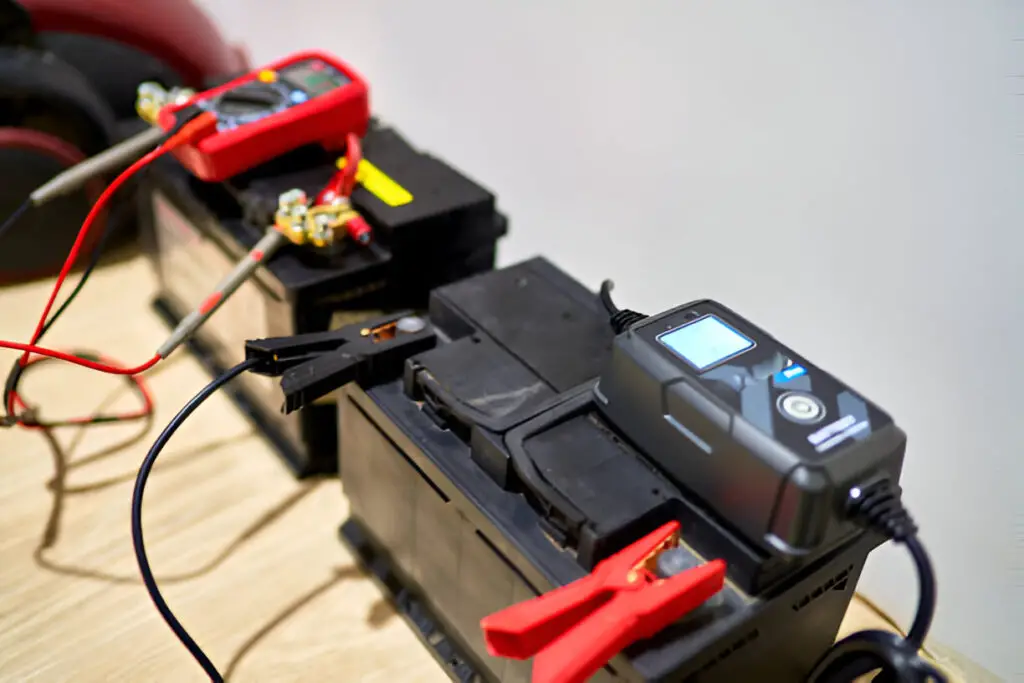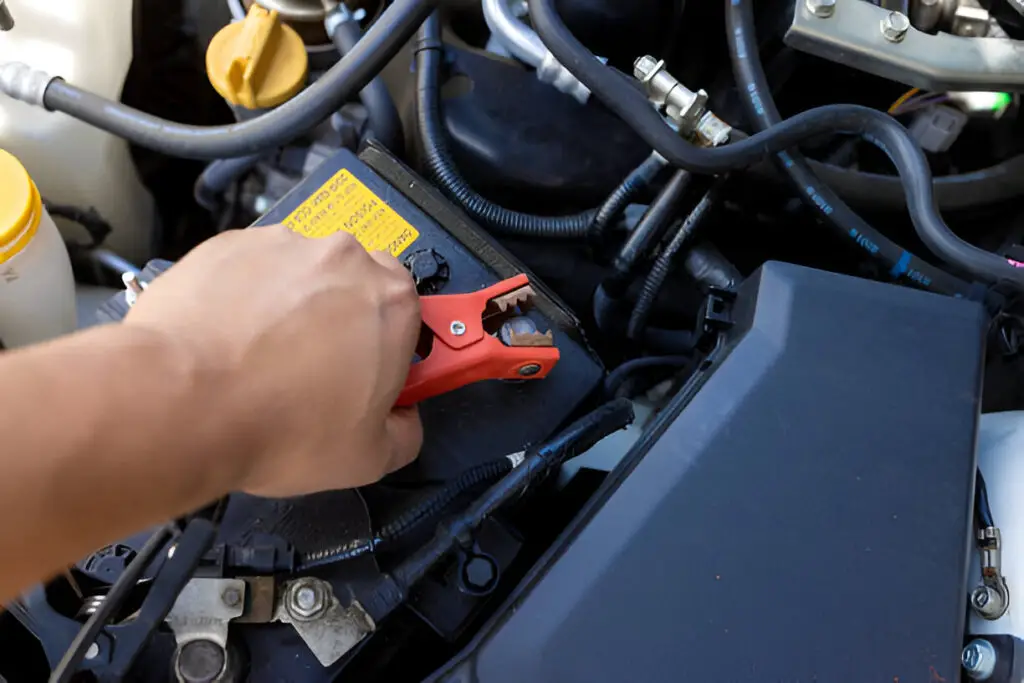Yes, battery reconditioning can work, especially for lead-acid and NiCd batteries, by reversing chemical degradation and extending their lifespan. It’s most effective in cases of sulfation (in lead-acid batteries) or memory effect (in NiCd batteries). However, reconditioning is less effective for lithium-ion batteries, where performance degradation is often irreversible.
In recent years, battery reconditioning has gained popularity as a cost-effective and environmentally friendly method for prolonging the life of various types of batteries. Many people wonder if this process truly works and if it’s a viable solution for their depleted batteries. In this detailed guide, we’ll explore the science behind battery reconditioning, how it works, its benefits, limitations, and whether it’s worth considering.

Contents
Battery Reconditioning
Battery reconditioning refers to the process of restoring a battery’s ability to hold and deliver charge by reversing chemical degradation that occurs over time. This degradation reduces the battery’s capacity, causing it to perform poorly or fail altogether. The process of reconditioning can revive these batteries, giving them a second life.
Batteries degrade for several reasons:
- Sulfation (for lead-acid batteries): The formation of lead sulfate crystals on the battery’s plates is a common cause of reduced performance. Reconditioning helps break down these crystals, restoring the battery’s capacity.
- Lithium-ion battery degradation: Over time, the charging and discharging cycles cause lithium-ion batteries to lose efficiency. Reconditioning can help recover some capacity but is often less effective compared to lead-acid batteries.
Battery reconditioning is applicable to a variety of battery types, including:
- Lead-acid batteries (used in cars, motorcycles, UPS systems, and golf carts)
- Nickel-cadmium (NiCd) and nickel-metal hydride (NiMH) batteries
- Lithium-ion batteries (used in laptops, smartphones, and electric vehicles)
How Battery Reconditioning Works
The process of battery reconditioning varies based on the battery type. Let’s examine how it works for the most common battery types:
1. Lead-Acid Batteries
Lead-acid batteries, commonly used in cars, are prime candidates for reconditioning. The process works by reversing the sulfation buildup that prevents the battery from holding a charge. Here’s a general overview of how it works:
- Desulfation: A lead-acid battery loses its efficiency over time due to the buildup of lead sulfate crystals on the battery’s plates. Reconditioning applies a controlled current to dissolve these crystals, allowing the battery to regain its ability to hold a charge. Read more about the car battery not holding charge.
- Recharging: After desulfation, the battery is recharged using a slow and controlled process, which helps restore its capacity without overheating or overcharging.
- Voltage balancing: During the reconditioning process, ensuring proper voltage balance is critical for optimal performance.
2. Nickel-Cadmium (NiCd) and Nickel-Metal Hydride (NiMH) Batteries
NiCd and NiMH batteries, used in cordless power tools and other electronics, can suffer from the “memory effect,” which causes the battery to remember its previous discharge point, reducing capacity. Reconditioning these batteries involves a process called deep discharging, where the battery is fully discharged before being slowly recharged, restoring its capacity.
3. Lithium-Ion Batteries
Lithium-ion batteries, found in smartphones, laptops, and electric vehicles, are more challenging to recondition. While some capacity can be recovered by recalibrating the battery (fully discharging and recharging), the benefits of reconditioning lithium-ion batteries are limited. This is because their degradation is caused by the gradual breakdown of internal components due to charging cycles, rather than sulfation.
Benefits of Battery Reconditioning
Battery reconditioning offers several significant benefits:
1. Cost Savings
Replacing a dead or dying battery can be expensive, particularly for larger batteries such as those used in cars or industrial equipment. Reconditioning can significantly extend the life of these batteries, potentially saving hundreds of dollars. For example, reconditioning a car battery can cost a fraction of the price of buying a new one.
2. Environmental Impact
Discarding batteries contributes to environmental pollution, as batteries contain toxic chemicals such as lead, cadmium, and lithium that can leach into soil and water. Battery reconditioning reduces waste by extending the life of batteries, lessening the need for new ones and limiting the environmental damage caused by mining and manufacturing new battery components.
3. Increased Battery Life
Properly reconditioned batteries can last months or even years longer than they would have without treatment. This is especially beneficial for batteries used in vehicles, power tools, and other critical devices where reliability is essential.
4. Availability for Multiple Battery Types
Battery reconditioning works on a variety of battery types, including lead-acid, NiCd, NiMH, and lithium-ion batteries. This means that it’s possible to recondition batteries for a wide range of applications, from cars and motorcycles to laptops and cordless tools.
5. Learning and DIY Value
For those interested in DIY solutions, learning to recondition batteries can be a valuable skill. It not only saves money but also allows you to revive batteries that otherwise would have been discarded. With the right tools and knowledge, many people find that reconditioning is a simple and rewarding process.
Limitations and Risks of Battery Reconditioning
While battery reconditioning offers several advantages, it’s important to be aware of its limitations and risks:
1. Not All Batteries Can Be Reconditioned
Not every battery is a good candidate for reconditioning. Severely damaged or excessively worn batteries may not respond well to reconditioning. For instance, a lead-acid battery with damaged plates or a lithium-ion battery with compromised cells may be beyond repair.
2. Limited Effectiveness for Lithium-Ion Batteries
Lithium-ion batteries are more complex than lead-acid or NiCd batteries, and reconditioning them is less effective. While recalibration can sometimes help recover a portion of their capacity, it usually won’t restore them to their original performance levels.
3. Safety Concerns
Reconditioning batteries involves working with chemicals and electricity, both of which can be hazardous if not handled correctly. Batteries can leak, overheat, or even explode under certain conditions. It’s important to follow safety guidelines, such as wearing protective gear and working in a well-ventilated area, when attempting to recondition batteries.
4. Equipment Requirements
Reconditioning batteries often requires specialized equipment, particularly for certain types of batteries like lead-acid or lithium-ion. Investing in a high-quality charger, multimeter, and other tools is necessary to recondition batteries safely and effectively.
5. Time and Effort
Reconditioning can take time and patience, as it involves multiple steps such as desulfation, deep discharging, and controlled recharging. While the process is generally straightforward, it requires attention to detail and careful monitoring.
Does Battery Reconditioning Really Work?
The effectiveness of battery reconditioning depends on several factors, including the type of battery, the degree of degradation, and the process used. Here’s a breakdown of when battery reconditioning is likely to work:
- Lead-acid batteries: Reconditioning is most effective for lead-acid batteries, particularly those that have suffered from sulfation. When done correctly, this process can restore much of the battery’s original capacity.
- NiCd and NiMH batteries: These batteries often respond well to reconditioning, especially if they have been affected by the memory effect. Deep discharging and recharging can often revive these batteries.
- Lithium-ion batteries: While some capacity can be recovered through recalibration, reconditioning lithium-ion batteries is generally less effective. The degradation of these batteries is often irreversible.
Overall, battery reconditioning does work, but its success depends on the battery type and condition. For lead-acid and NiCd batteries, reconditioning can significantly extend their lifespan, while for lithium-ion batteries, the benefits are more limited.

Frequently Asked Questions
Here are some FAQs about battery reconditioning –
1. Can I recondition a completely dead battery?
In some cases, a completely dead battery can be reconditioned, especially if it’s a lead-acid or NiCd battery. However, if the battery is physically damaged or has been severely degraded, reconditioning may not be effective.
2. How long does a reconditioned battery last?
A reconditioned battery can last anywhere from several months to a few years, depending on the battery type, its age, and how well it was reconditioned. Lead-acid batteries often benefit the most from reconditioning and can last several more years if properly maintained.
3. Is it safe to recondition batteries at home?
Yes, reconditioning batteries at home is generally safe if proper precautions are taken. Always wear protective gear, follow safety guidelines, and work in a well-ventilated area to avoid exposure to hazardous chemicals and electrical risks.
4. Can lithium-ion batteries be reconditioned?
Lithium-ion batteries can be reconditioned to a limited extent, often through recalibration. However, their performance degradation is often irreversible, and reconditioning typically won’t restore them to full capacity.
5. What equipment do I need to recondition a battery?
To recondition a battery, you’ll typically need a battery charger, a desulfator (for lead-acid batteries), a multimeter, and possibly a power supply to discharge and recharge the battery safely. Specific tools depend on the battery type you’re working with.
Conclusion
Battery reconditioning can be a highly effective way to extend the life of certain types of batteries, particularly lead-acid and NiCd batteries. While the process may not work for every battery, and its effectiveness for lithium-ion batteries is limited, reconditioning offers significant cost savings and environmental benefits. With the right knowledge and tools, reconditioning can be a valuable skill, helping to save money and reduce waste in the long run.